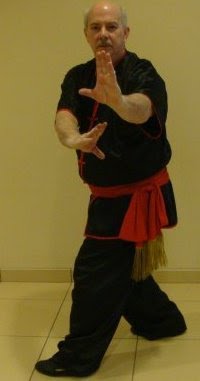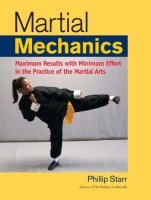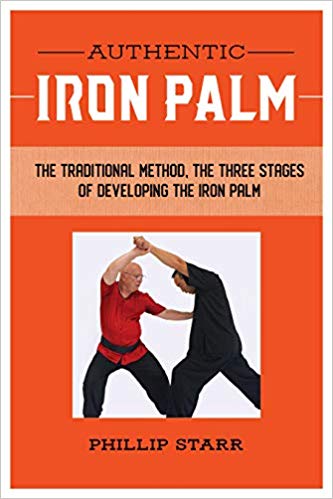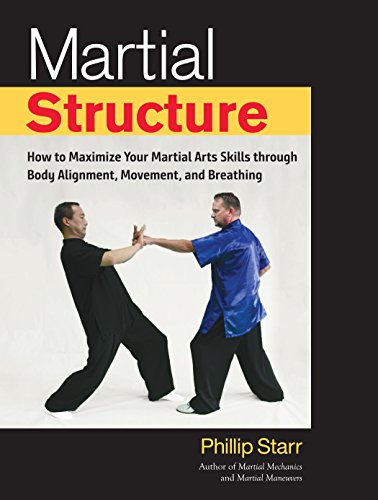I
remember watching a martial arts demonstration many years ago where
the instructor informed the audience, which was comprised largely of
other teachers, that he and his students would be performing an
ancient Japanese martial discipline. He then proceeded with his
exhibition, which featured various and sundry forms of punching,
kicking, and swordsmanship. To say that his use of the Japanese
katana was somewhat flawed would be a very serious understatement; I,
for one, was amazed that he didn't cut himself as he whipped the
blade around with one hand, flipping it this way and that.
His
empty-hand sets weren't much better. They featured the usual variety
of punches, strikes, and kicks, including roundhouse kicks, side snap
kicks, and...HOLD ON! ROUNDHOUSE KICKS? SIDE SNAP KICKS? Yep.
Little did he suspect that techniques such as these are far from
“ancient” and most martial arts enthusiasts would never suspect
the truth, anyway. So here's a couple of eye-openers...
The
roundhouse kick, as we know it, didn't exist until the 1950's!
That's right. The familiar form of executing the kicks with the
thigh raise up parallel to the ground and striking with the ball of
the foot was actually developed by an instructor of the Japan Karate
Association (he was a classmate of the President of the JKA,
Masatoshi Nakayama) in the 50's. It was designed for use in
jyu-kumite (freestyle sparring) competition and it has worked quite
well in that regard. But this is also why this popular kick is not
to be found in ANY of the original Okinawan karate katas; it simply
didn't exist!
The
old Chinese forms sometimes used a form of roundhouse kicking that
actually bears a closer resemblance to the muay-thai “cutting
kick.” The foot in chambered lower and contact is usually made
with the top of the instep as the kicks comes in at a rising angle.
In my opinion, it lacks the destructive power of the newer Japanese
version. But this kind of kick is also very rare in Chinese forms,
appearing only in a very few sets of northern Chinese origin. It
does not appear in southern kung-fu styles and it is from these
styles that most Okinawan karate forms evolved.
The
method of using the top of the instep to strike with a roundhouse
kick actually was rather uncommon prior to the development of foot
pads in competition. This is because such a kick could easily become
a religious experience; if your kick connected with an opponent's
elbow or other similar bony protrusions, you'd swear you could see
God! When the foot pads came along, competitors saw that they could
point their toes and make contact with the tip of the pad to score a
point, The pad provided them with up to an extra twelve inches of
reach, This led to many instructors actually teaching their students
to execute this kick with the instep rather than with the ball of the
foot.
The
same thing is true of the side snap kick. Now, there are two ways of
executing a “side kick.” One method utilizes a quick snapping
movement from the knee (the snap kick), and the other drives the edge
of the foot out in a straight line, more or less (the thrust kick).
In chambering the side snap kick, the kicking knee points out at an
angle. If you're facing north and you chamber your right leg, your
knee will point towards a northeasterly direction. The thrust kick
is done differently because it is very powerful and requires a strong
hip rotation. When you chamber the leg, your knee will be pointed
straight ahead (in the same direction that you are facing).
The
snap kick is considerably weaker than the thrust kick and is not to
be seen in any of the ancient Okinawan kata. Moreover, the old katas
don't include ANY kicks that travel above the level of the waist.
The side thrust kick is almost always directed at the knee of the
opponent. To kick much higher would expose the groin to a quick
counter-attack which wouldn't necessarily require much power!
Nonetheless,
the JKA developed the side snap kick for use in kata competition
because it is exciting to watch and allowed for more variety in
(kata) kicks than seeing the same old front snap kick performed
repeatedly.
Many
shotokan karate stylists broke away from the JKA because of these
changes but the influence of the JKA was felt throughout the entire
karate community. Taekwondo and Tangsoodo, both of which are Korean
arts, were developed from shotokan and subsequently include these
peculiar kicks.
So,
there you have it; a short but interesting lesson in the history and
development of modern-day karate. And there's more. Much, much
more.














